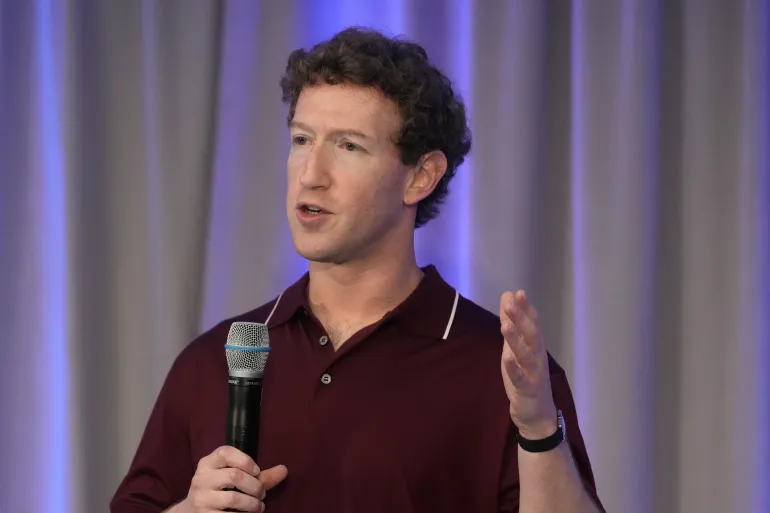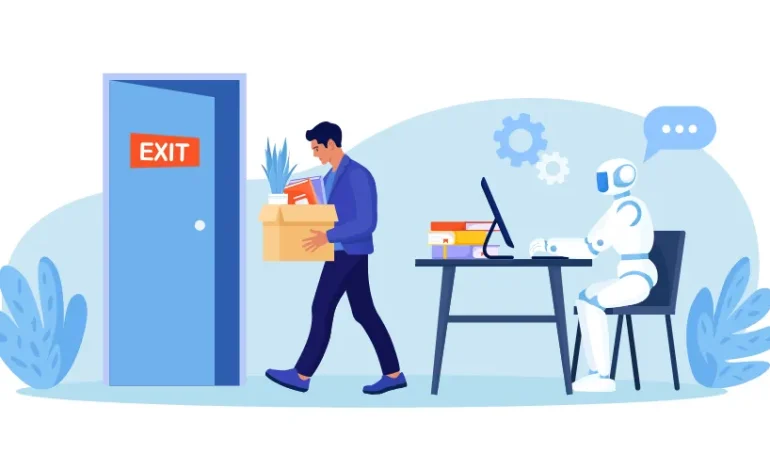Concerns about artificial intelligence replacing human workers have surged in recent months, fueled by bold statements from tech executives and mounting headlines, NBC News reports.
But experts suggest that while AI is indeed influencing hiring practices, widespread job displacement remains limited — for now.
A report this week from job consultancy Challenger, Gray & Christmas found that just 75 out of nearly 287,000 planned layoffs this year were directly tied to AI. Automation overall accounted for around 20,000 job losses, with government spending cuts and broader economic conditions being the dominant drivers of workforce reductions.
“Far less is happening than people imagine,” said Andrew Challenger, senior vice president at the firm. “There are roles that can be significantly changed by AI right now, but I’m not talking to too many HR leaders who say AI is replacing jobs.”
This data contrasts with recent warnings from business leaders. Amazon CEO Andy Jassy noted that AI will likely lead to a smaller corporate workforce over time, although he also predicted new types of roles could emerge. Meanwhile, Ford CEO Jim Farley appeared to echo a controversial prediction that AI might eventually replace half of white-collar jobs — though his remarks were contextual and speculative, rather than policy announcements.
Instead of driving direct layoffs, AI seems to be reshaping hiring strategies. Facing economic uncertainty, and in some cases the added cost burden from US trade policies, many companies are freezing recruitment and redirecting resources into AI development and tools.
“There’s basically a blank check to go out and buy these AI tools,” said Josh Bersin, head of workforce consultancy The Josh Bersin Company. “Then they go out and say, as far as head count: No more hiring.”
Some companies have made headlines for formally adopting this approach. Shopify, for instance, now requires employees to justify why they can’t use AI tools before requesting additional resources. Duolingo has taken similar steps, gradually phasing out contractors for tasks AI can handle.
This kind of internal policy shift may be contributing to slower hiring across sectors, particularly in business and professional services. But that’s different from direct AI-driven layoffs.
Even tech firms developing AI are not immune from restructuring. Microsoft, which has seen strong market performance partly due to its AI product Copilot, recently cut around 15,000 jobs — many in software development — while ramping up investment in data centers for AI processing. According to analysts, these moves are less about AI replacing humans outright and more about shifting budget priorities.
“We believe that every year Microsoft invests at the current levels, it would need to reduce headcount by at least 10,000,” said Gil Luria, a tech analyst at D.A. Davidson, citing increased capital expenditures as the core pressure.
Some industry watchers caution that AI’s role in these layoffs may be overstated. A report from Capital Economics noted that some firms may be using AI as a convenient narrative to explain cost-cutting measures stemming from financial challenges.
At the same time, AI is increasingly used in hiring itself. Companies like IBM have replaced segments of their HR departments with AI tools, automating tasks like resume screening and candidate interviews. But CEO Arvind Krishna noted that this has freed up resources to hire more programmers and salespeople — suggesting a shift, not a loss, in workforce composition.
“We have done a huge amount of work on leveraging AI, but our total employment has actually gone up,” Krishna said.
While AI is altering the shape of work, economists say structural economic forces — inflation, market uncertainty, and changing trade policies — continue to have a greater impact on hiring trends than AI.
“AI will fundamentally change a whole lot of jobs,” said Svenja Gudell, chief economist at Indeed Hiring Lab. “But there’s not evidence that it’s fully replacing whole workers, or that the current slowdown can be attributed to it.”










The latest news in your social feeds
Subscribe to our social media platforms to stay tuned